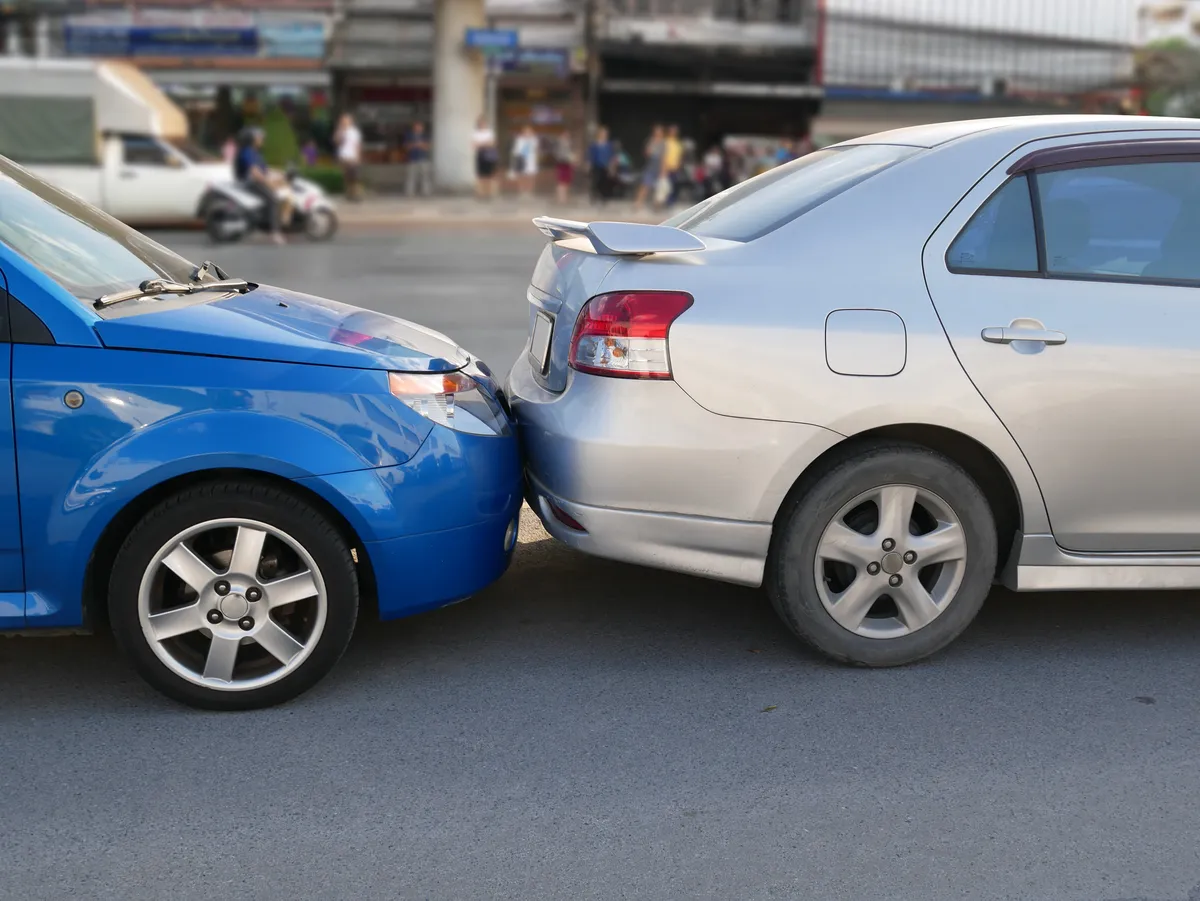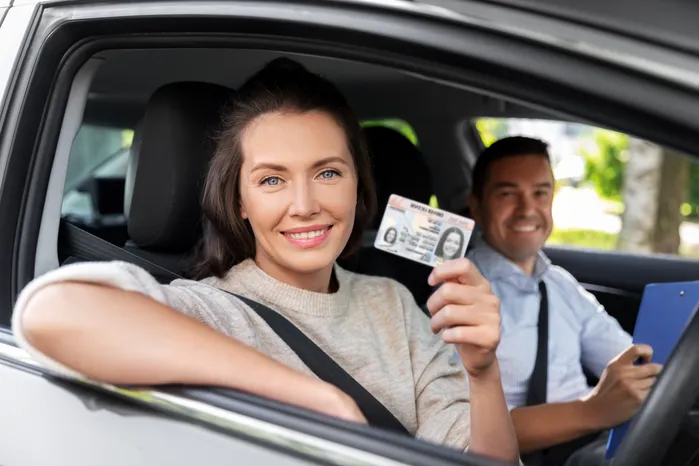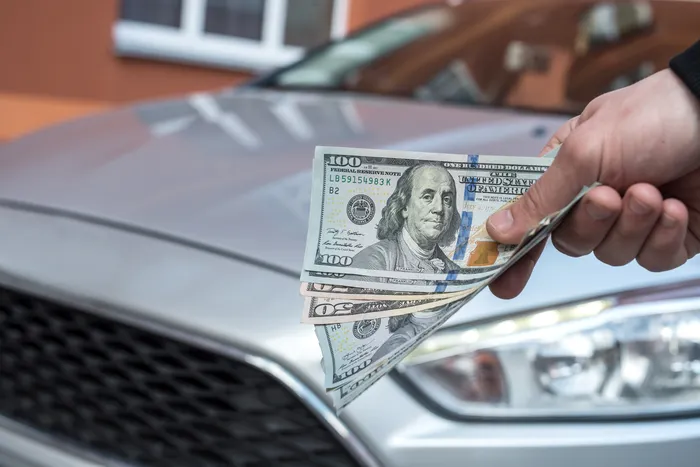4 min read time
Table of Contents
Am I Automatically at Fault for a Rear-End Collision?
If you were the rear driver in a rear-end collision, you are not automatically at fault for the accident; instead, you are typically presumed to be the at-fault driver.
This is because there is a presumption that rear drivers should maintain a safe following distance while being attentive to changing traffic conditions.
If you were involved in a rear-end collision and wish to fully understand your fault in the accident, contact a Las Vegas rear-end car accident attorney from the Rodney Okano Car Accident Lawyer Firm today by calling (702) 566-3600 for a free case evaluation.
When Is A Rear-End Collision Not Your Fault
In a rear-end accident, it's typically presumed that the rear driver is at fault; however, there are situations where the rear driver is not at fault, such as in a multi-car accident, and there are scenarios where the front driver can be at fault such as if they where driving recklessly.
The Front Driver Suddenly Reverses
One situation in which the rear driver may not be at fault is if the front driver suddenly reverses their vehicle without reason.
Even if the front driver accidentally reverses their vehicle, they could still be found liable for the accident.
The Lead Vehicle’s Brake Lights Are Broken
In a rear-end collision, if the front driver's brake lights were broken or malfunctioning, the lead driver may be found at fault for the accident, as they provided the rear driver with little to no warning to stop.
The Lead Driver Performs an Unsafe Lane Change
If a driver cuts in front of another vehicle and abruptly slows down or stops, resulting in a rear-end accident, the driver who performed the cutting off may be at fault for the rear-end crash.
The Lead Vehicle Abruptly Stops
In a rear-end accident, if the front driver brakes suddenly without reason, then they may be found partially at fault for the car accident.
Rear Driver Is Involved in a Multi-Car Accident
In multi-vehicle rear-end collisions, determining fault could be complex as the rear driver may have been pushing into the lead driver due to another driver hitting them or vice versa.
Typically, all drivers may share the fault as it is difficult to avoid liability in rear-end collisions involving multiple drivers
How Do You Determine Liability in a Rear-End Car Accident?
Determining liability in a rear-end accident is not as straightforward as it may seem and may even require assistance from an experienced Las Vegas car accident attorney.
In a rear-end accident, proving driver negligence is usually done by:
- Analyzing the Accident: When looking to prove fault in your accident case, the circumstance of the accident must be investigated, such as the behavior of the drivers involved, road conditions, traffic signals, and any other significant factors in the car accident.
- Reviewing Traffic Laws: A thorough look into traffic laws is necessary. Your state may have laws such as NRS 484B.127 or NRS 484B.603 that outline traffic laws meant to prevent rear-end accidents, and if a driver involved in your accident case violated one of them, they could be found at fault.
- Collecting Evidence: It's crucial to collect as much evidence as possible when seeking a substantial settlement offer, which could include witness statements, traffic camera footage, police reports, and photographs. In addition, you may use a car accident reconstruction specialist to provide expert testimony in court or negotiations.
- Understanding Contributory Negligence: Contributory negligence allows for multiple drivers in a car accident to share fault. It's vital to understand this, especially when determining fault in a multiple-vehicle rear-end accident.
Proving driver negligence alone can be a difficult and time-consuming task, which is why it's recommended you obtain legal help from an experienced car accident attorney who can help you understand negligence exceptions, rear driver liability, and how external conditions may be a factor in your case.
If you were involved in a rear-vehicle accident and would like to speak with a seasoned Las Vegas car accident lawyer, contact one here for a free case evaluation.
What Is the 3-Second Rule to Avoid a Rear-End Collision?
The 3-second rule is an effective and easy way to avoid rear-end collisions by forcing you to maintain a safe following distance.
How to Apply the 3-Second Rule
The 3-second rule consists of you counting the time it takes for your vehicle to reach a fixed point on the road after passing you.
Applying the 3-second rule can be done by:
- Pick a Fixed Object: When driving, identify a stationary object along the road, such as a signpost, tree, or road light.
- Stating Counting: When the vehicle in front of you passes the object you picked, start counting to three.
- Determine Your Following Distance: If you pass by the object you identified before you finish counting to three, it's a sign that you need to increase your following distance.
By properly applying the 3-second rule to your daily driving, you can effectively prevent yourself from getting into a rear-end accident.
What Is the Average Payout for a Rear-End Collision?
A settlement payout for a rear-end car accident depends on numerous factors, such as severity and liability; however, the average payout for a rear-end collision is between $2,000 and $5,000.
For more severe rear-end collisions that result in significant injuries such as back, spine, or head injuries, the payout may range from $10,000 to $50,000.
Speak with a Las Vegas Car Accident Lawyer Today
If you were injured in a rear-end accident and wish to obtain compensation for the injuries and damages you sustained in the accident, contact one of our experienced Las Vegas rear-end car accident lawyers.
With over 20+ years of experience in personal injury law, our law firm understands how to prove fault and obtain the most compensation from a personal injury claim.
Don't wait on your car accident case; speak with a Las Vegas car accident lawyer today by calling (702) 566-3600.
Obtain the Compensation You're Entitled To
Contact Us Today
Rodney Okano Car Accident Lawyer is a Las Vegas personal injury law firm with over 20 years of experience helping clients obtain maximum compensation following injuries from accidents such as car crashes, worksite injuries, and slips and falls. Over those years, The Rodney Okano Car Accident Lawyer Law Firm has become an experienced law firm that can ensure exceptional results for any of its clients.



